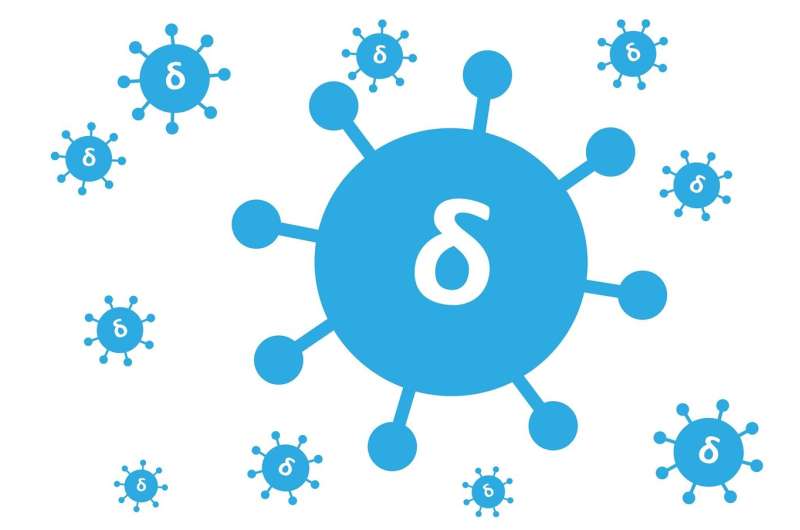
When Kamlendra Singh flew back to Missouri from India in April, he developed a cough and fever on the plane, despite being vaccinated for COVID-19 and testing negative for the virus right before departure.
Still, Singh tested positive for COVID-19, most likely due to infection from the Delta variant, upon his arrival home in Boone County—a diagnosis other fully vaccinated people and those who have already tested positive for the contagious virus were experiencing. He wanted to know why.
Following his recovery at home, Singh, a professor in the MU College of Veterinary Medicine and Bond Life Sciences Center, teamed up with MU undergraduate student Austin Spratt, Saathvik Kannan, a freshman at Hickman High School, and Siddappa Byrareddy, a professor at the University of Nebraska Medical Center, to analyze protein sequences for more than 300,000 COVID-19 samples of two emerging variants around the world, known as Delta and Delta Plus.
Using bioinformatics tools and programming, the team identified five specific mutations that are far more prevalent in Delta Plus infections than in Delta infections, including one mutation, K417N, that is present in all Delta Plus infections but present in nearly no Delta infections. The findings provide important clues to researchers about the structural changes to the virus recently and highlight the need to expand the toolbox in the fight against COVID-19.
“Whether it is natural antibodies produced from previously having COVID-19 or the antibodies produced from the vaccine, we are showing structurally how dangerous and clever the virus is by [its] being able to mutate in a way that the antibodies don’t seem to recognize and defend against these new variants,” Spratt said. “These findings help explain why there have been so many people testing positive for the Delta variants despite being vaccinated or having previously been infected with COVID-19.”
Singh explained that while COVID-19 vaccines have been effective, another possible tool in responding to the pandemic could be the development of antiviral drugs that target specific areas of the virus that remain unchanged by mutations.
Source: Read Full Article
